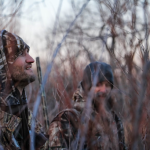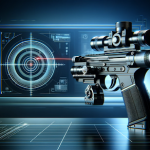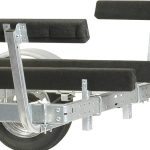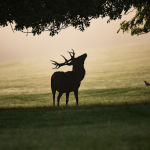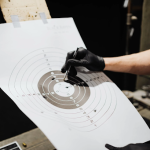
Sighting a target is a critical skill for hunters — and their ability to successfully hone in on an animal determines the success of their hunt. But if you’re new to deer hunting, you might not know how to sight in and take down a deer.
In this guide, we’re breaking it down step by step. We’ll explore preparations to make at the range, offer a list of steps to take when it’s time to line up a shot, and provide tips for improving your skills.
Above all, new hunters should remember that practice is critical to building accuracy — prepare to invest time and effort into improving your skills and marksmanship ahead of your next deer hunt.
Sighting in Shots: Practice Makes Perfect
Putting in time at the range (or in your practice field) is key to building confidence and accuracy when shooting. Here are some tips for optimizing your practice time:
- Set goals – Setting attainable goals will help you track your progress as you improve. If you’re shooting a rifle, for instance, a reasonable early goal might be shooting a two-inch group at 100 yards consistently.
- Create a ballistics chart – While an existing ballistics chart (a table of how much your projectile will drop as your range increases) might be published for your weapon (by other hunters or a manufacturer), you should confirm any existing documentation with range practice or make your own ballistics chart. Once you’ve documented how your ammunition performs over various ranges, you can tape your ballistics chart to your crossbow or rifle stock or keep it in your lap during hunts.
- Use practice and hunting broadheads – For archery hunters, refine your ballistics chart with practice broadheads. But, confirm that it’s accurate and performs consistently with the broadheads you’ll actually use while hunting, too.
How to Sight and Take Down a Deer
As you refine your skills at the range, get comfortable with the following steps for sighting in and taking down a deer during your hunt.
#1 Get a Range Reading
When you’re in your stand or blind, taking range readings is one of the first things you should do after setting up and getting comfortable. Use your range finder to determine the distances of:
- Nearby trees
- Fence posts
- Other stands
- Any visual reference you can use when it’s time to take a shot
You should also do your best to get a range reading once you see a deer walk up. Once you know how far away your target is, consult your ballistics chart to account for drop if necessary.
#2 Find Stability
When you have a visual on a potential target, prepare to take a shot by getting stable:
- Rifle hunters should have four points of contact: their feet should be firmly on the ground (or on the floor of their stand) and their elbows should be resting on a stable surface on each side of their rifle. Ideally, their rifles are on a tripod, bipod, or bench. This also applies to crossbow hunters.
- Compound bow hunters should have both feet planted on the ground (or the floor of their stand), but leaning with the elbows isn’t a convenient option for this weapon type. Instead, consider leaning against a tree or the back of your stand for stability.
Since stability isn’t guaranteed, you should also devote range time to taking shots off the shoulder; but, these skills are somewhat advanced, so don’t expect perfection right away.
#3 Try to Stop the Deer
Once you’re almost ready to take a shot (your weapon should be shouldered and you should be prepared to peer through your sight), try to stop the deer if it’s walking. All you have to do is make a noise:
- A deer-like sound
- A noise from your call
- A simple, one-word phrase, like “Hey”
To get a feel for this technique, try to find some GoPro videos of other hunters doing this.
It might sound counterintuitive, but deer typically don’t run at the first startling sound they hear: they stop, assess their surroundings, and then run away if they sense danger.
But this method also increases your risk of being seen. So, you should only make a sound once you’re moments away from taking a shot.
#4 Sight in the Target
Once your deer has stopped moving, peer through your sight and line up your shot, accounting for any drop using your ballistics chart.
What should you aim for on a deer? Most hunters aim for the “boiler room,” or the heart and lung area. For the perfect shot through the boiler room, aim a few inches above and slightly behind a front leg. Ideally, you’ll achieve a heart or lung shot with this method.
If you miss the boiler room but still hit the deer, you can expect some of the following results:
- Hitting too far back – If you aim too far behind the front leg, you could take a gut shot. These are typically lethal, but your deer may run a long way or take a while to expire.
- Hitting too far forward – If you aim in front of the front leg instead of behind it, you could take a neck shot. These aren’t always lethal; prepare to follow your deer once it runs away, and prepare another round or arrow if you need to take a follow-up shot.
- Hitting too low – If you aim too low, you’ll either miss entirely or hit the deer’s leg. Leg shots typically aren’t lethal; you’ll need to make a follow-up shot as soon as possible.
- Hitting too high – If you aim too high above the front leg, you should miss the boiler room — but you might not hit the backbone. Deer’s spines dip toward their rib cages above the front legs, so a shot that’s too high might be non-lethal
Tips for New Deer Hunters
What should new hunters focus on as they practice at the range and take their first deer harvests? Here are some skills to develop as you improve your skills:
- Breathwork – Some hunters exhale when they pull their triggers or release their bow strings. Others hold their breath. The goal is to stay as still as possible as you sight in your target and take your shot — find a breath method that creates as much stability as possible.
- Visual range-finding – While your range finder is a critical tool, it shouldn’t be a crutch. Practice your visual range-finding skills, getting a feel for distances. You can practice this at home, using your range finder to check your guesses. This will immensely help you in the field, especially if you have to line up a shot quickly.
- Discretion – Whether you’re a new hunter or a seasoned pro, you should only be taking ethical shots that you’re confident will land in a lethal fashion. If your deer walks away, is quartered away from you, or is too far for your weapon’s intended range (or your skills at long distances), skip the shot — there will be other deer, other tags, and other hunting locations. It’s better to leave your hunting habitat as you found it instead of maiming an animal.
Sighting in Deer: Focus on Technique for a Successful Harvest
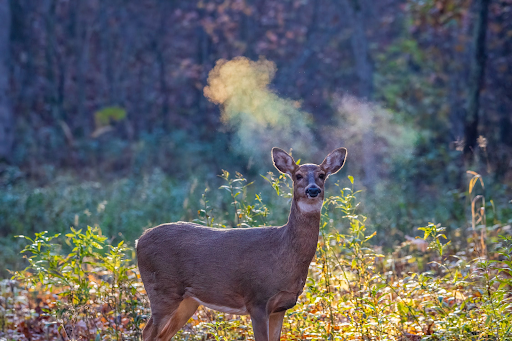
Hunting is all about technique: refining your marksmanship, practicing the shot line-up procedure, getting a feel for ranges, and (above all) taking responsible shots will all help you fill your deer tags successfully and ethically.
Progress might seem slow at the beginning — but, with the tips above, you’re sure to improve over time and start bagging clean harvests.

